- Home
- Clive Cussler
Dragon dp-10 Page 3
Dragon dp-10 Read online
Page 3
The man seemed to have burned from within.
2
THE HORRIBLE STENCH and the shocking sight staggered Steen. It took him a full minute to recover. Then he pushed the chair with its hideous owner off to one side and leaned over the radio.
Fortunately the digital frequency dial was labeled in Arabic numerals. After a few minutes of trial and error, he found the correct switches and hailed Captain Korvold on the Narvik.
Korvold answered immediately. “Come in, Mr. Steen,” he replied formally. “What have you discovered?”
“Something sinister has happened here, Captain. So far we’ve found a deserted ship with one body, that of the radio operator, who was burned beyond recognition.”
“Is there fire on board?”
“No sign. The computerized automated control system shows only green lights on its fire warning systems.”
“Any indication as to why the crew took to the boats?” asked Korvold.
“Nothing obvious. They seemed to have left in a panic after attempting to scuttle the ship.”
Korvold’s mouth tightened, his knuckles turned ivory as he squeezed the phone. “Say again.”
“The sea cocks were turned and jammed open. Andersson is working to close them now.”
“Why on earth would the crew scuttle a sound ship with thousands of new cars on board?” Korvold asked vaguely.
“The situation must be viewed with suspicion, sir. Something on board is abnormal. The body of the radio operator is ghastly. He looks like he was roasted on a spit.”
“Do you wish the ship’s doctor to come over?”
“Nothing the good doctor can do here except perform a postmortem.”
“Understood,” replied Korvold. “I’ll remain on station for another thirty minutes before I leave to search for the missing boats.”
“Have you contacted the company, sir?”
“I’ve held off until you’re certain none of the original crew is alive to challenge our salvage claim. Finish your investigation. As soon as you’re satisfied the ship is deserted I’ll transmit a message to our company director notifying him of our taking possession of the Divine Star.”
“Engineer Andersson is already at work closing the sea cocks and pumping her dry. We have power and should be under way shortly.”
“The sooner the better,” said Korvold. “You’re drifting toward a British oceanographic survey vessel that’s holding a stationary position.”
“How far?”
“Approximately twelve kilometers.”
“They’re safe enough.”
Korvold could think of little else to say. At last he said simply, “Good luck, Oscar. Make port safely.” And then he was gone.
Steen turned from the radio, his eyes avoiding the mutilated body in the chair. He felt a cold shudder grip him. He half expected to see the spectral captain of the Flying Dutchman pacing the bridge. There was nothing as morbid as a deserted ship, he thought grimly.
He ordered Sakagawa to hunt up and translate the ship’s log. The two remaining seamen he sent to search the auto decks while he systematically went through the crew’s quarters. He felt as though he was walking through a haunted house.
Except for a few bits of scattered clothing, it looked as if the crew might return at any minute. Unlike the mess on the bridge, everything seemed lived in and ordinary. In the captain’s quarters there was a tray with two teacups that had miraculously failed to fall on the deck during the storm, a uniform laid out on the bed, and a pair of highly polished shoes side by side on the carpeted deck. A framed picture of a woman and three teenage sons had dropped flat on a neat and clean desk.
Steen was hesitant to pry into other men’s secrets and their memories. He felt like an uninvited intruder.
His foot kicked something lying just under the desk. He leaned down and picked up the object. It was a nine-millimeter pistol. A double-action Austrian Steyr GB. He pushed it into the waistband of his pants.
The chiming of a wall-mounted chronometer startled him, and he swore he felt his hair rise. He finished his search and beat a quick path back to the bridge.
Sakagawa was sitting in the chart room, his feet perched on a small cabinet, studying the ship’s log.
“You found it,” said Steen.
“In one of the open briefcases.” He turned back to the opening pages and began to read. ” ‘Divine Star, seven hundred feet, delivered March sixteenth, nineteen eighty-eight. Operated and owned by the Sushimo Steamship Company, Limited. Home port, Kobe.’ On this voyage she’s carrying seven thousand, two hundred and eighty-eight new Murmoto automobiles to Los Angeles.”
“Any clues as to why the crew abandoned her?” Steen asked.
Sakagawa gave a puzzled shake of his head. “No mention of disaster, plague, or mutiny. No report of the typhoon. The last entry is a bit odd.”
“Read it.”
Sakagawa took a few moments to be sure his translation of Japanese characters into English was reasonably correct. “The best I can get out of it is: ‘Weather deteriorating. Seas increasing. Crew suffering from unknown illness. Everyone sick including Captain. Food poisoning suspected. Our passenger, Mr. Yamada, a most important company director, demands we abandon and sink ship during hysterical outburst. Captain thinks Mr. Yamada has suffered nervous breakdown and has ordered him placed under restraint in his quarters.’ “
Steen looked down at Sakagawa, his face expressionless. “That’s all?”
“The final entry,” said Sakagawa. “There is no more.”
“What’s the date?”
“October first.”
“That’s two days ago.”
Sakagawa nodded absently. “They must have fled the ship shortly after. Damned funny they didn’t take the log with them.”
Slowly, unhurriedly, Steen walked into the communications room, his mind trying to make sense out of the final log entry. Suddenly he stopped and reached out to support himself in the doorway. The room seemed to swim before his eyes and he felt nauseous. Bile rose in his throat, but he forced it down. Then, as quickly as the attack came, it passed.
He walked unevenly over to the radio and hailed the Narvik. “This is First Officer Steen calling Captain Korvold, over.”
“Yes, Oscar,” answered Korvold. “Go ahead.”
“Do not waste time on a search effort. The Divine Star‘s log suggests the crew left the ship before they were struck by the full force of the typhoon. They departed nearly two days ago. The winds would have swept them two hundred kilometers away by now.”
“Providing they survived.”
“An unlikely event.”
“All right, Oscar. I agree, a search by the Narvik will be useless. We’ve done all that can be expected of us. I’ve alerted American sea rescue units at Midway and Hawaii and all vessels in the general area. Soon as you regain steerageway we’ll resume course for San Francisco.”
“Acknowledged,” Steen replied. “I’m on my way to the engine room to check with Andersson now.”
Just as Steen finished transmitting, the ship’s phone buzzed. “This is the bridge.”
“Mr. Stem,” said a weak voice.
“Yes, what is it?”
“Seaman Arne Midgaard, sir. Can you come down to C cargo deck right away? I think I’ve found something—”
Midgaard’s voice stopped abruptly, and Steen could hear the sounds of retching.
“Midgaard, are you sick?”
“Please hurry, sir.”
Then the line went dead.
Stem yelled at Sakagawa. “What button do I push for the engine room?”
There was no reply. Stem stepped back into the chart room. Sakagawa was sitting there pale as death, breathing rapidly. He looked up and spoke, gasping the words with every breath.
“The fourth button… rings the engine room.”
“What’s wrong with you?” Steen asked anxiously.
“Don’t know. I… I feel… awful… vomited twice.”
/>
“Hang on,” snapped Steen. “I’ll gather up the others. We’re getting off this death ship.” He snatched the phone and rang the engine room. There was no answer. Fear flooded his mind. Fear of an unknown that was striking them down. He imagined the smell of death pervading the whole ship.
Stem took a swift glance at a deck diagram that was mounted on a bulkhead, then leaped down the companionway six steps at a time. He tried to run toward the vast holds containing the autos, but a nausea cramped his stomach and he weaved through the passageway like a drunk through a back alley.
At last he stumbled through the doorway onto C cargo deck. A great sea of multicolored automobiles stretched a hundred meters fore and aft. Amazingly, despite the buffeting from the storm and the list of the ship, they were all firmly in place.
Stem shouted frantically for Midgaard, his voice echoing from the steel bulkheads. Silence was his only reply. Then he spotted it, the oddity that stood out like the only man in a crowd holding aloft a sign.
One of the cars had its hood up.
He staggered between the long rows, falling against doors and fenders, bruising his knees on the protruding bumpers. As he approached the car with the open hood, he shouted again. “Anyone here?”
This time he heard a faint moan. In ten paces he had reached the car and stared frozen at the sight of Midgaard lying beside one tire.
The young seaman’s face was festered with running sores. Froth mixed with blood streamed from his mouth. His eyes stared unseeing. His arms were purple from bleeding beneath the skin. He seemed to be decaying before Steen’s eyes.
Steen sagged against the car, stricken with horror. He clutched his head between his hands in helplessness and despair, not noticing the thicket of hair that came away when he dropped them to his sides.
“Why in God’s name are we dying?” he whispered, seeing his own grisly death mirrored by Midgaard. “What is killing us?”
3
THE DEEP-SEA SUBMERSIBLE Old Gert hung suspended beneath a large crane that sat on the stern of the British oceanographic vessel Invincible. The seas had calmed enough to launch Old Gert for a scientific probe of the seafloor 5,200 meters below, and her crew were following a tight sequence of safety checks.
There was nothing old about the submersible. Her design was the latest state of the art. She was constructed by a British aerospace company within the past year and was now poised for her maiden test dive to survey the Mendocino fracture zone, a great crack in the Pacific Ocean floor extending from the coast of Northern California halfway to Japan.
Her exterior was a complete departure from other aerodynamic submersibles. Instead of one cigar-shaped hull with a pregnant pod attached beneath, she had four transparent titanium and polymer woven spheres connected by circular tunnels that gave her the appearance of a jack from a child’s game. One sphere contained a complex array of camera equipment, while another was filled with air and ballast tanks and batteries. The third held the oxygen equipment and electric motors. The fourth sphere, the largest, sat above the other three and housed the crew and controls.
Old Gert was built to withstand the immense pressures found at the deepest parts of the world’s seabeds. Her support systems could keep a crew alive for forty-eight hours, and she was powered to travel through the black abyss at speeds up to eight knots.
Craig Plunkett, the chief engineer and pilot for Old Gert, signed the last of the check-off forms. He was a man of forty-five or fifty, with graying hair combed forward to cover his baldness. His face was ruddy and his eyes a medium brown with a bloodhound droop. He had helped design Old Gert and now treated her as his own private yacht.
He pulled on a heavy woolen sweater against the expected chill from the cold bottom water and slipped his feet into a pair of soft fur-lined moccasins. He descended the boarding tunnel and closed the hatch behind him. Then he dropped into the control sphere and engaged the computerized life-support systems.
Dr. Raul Salazar, the expedition’s marine geologist from the University of Mexico, was already in his seat adjusting a bottom sonar penetrating unit.
“Ready when you are,” said Salazar. He was a small dynamo with a huge mass of black hair, his movements quick, black eyes darting constantly, never staring at any one person or object for more than two seconds. Plunkett liked him. Salazar was the kind of man who accumulated his data with a minimum of fuss, made the right decisions without clouding the facts, and was accustomed to engineering a deep-sea probe from more of a business viewpoint than an academic project.
Plunkett glanced at the empty seat on the sphere. “I thought Stacy was on board.”
“She is,” answered Salazar without turning from his console. “She’s in the camera sphere making a final check of her video systems.”
Plunkett bent over the tunnel leading to the camera sphere and found himself staring at a pair of sweat-socked feet. “We’re ready to launch,” he said.
A feminine voice accompanied by a hollow tone came back, “Be finished in a sec.”
Plunkett eased his feet under his control panel and was settling into his low half-reclining seat when Stacy Fox wiggled her way backwards into the control sphere. Her face was flushed from working nearly upside down.
Stacy wasn’t what you’d call disturbingly attractive, but she was pretty. Her long, straight blond hair fell around her face, and she often hurled it back with a brief shake of the head. She was slim and her shoulders were broad for a woman. The crew could only speculate about her breasts. None had ever seen them, of course, and she always wore loose fitting sweaters. But occasionally, when she yawned and stretched, her chest gave an indication of firm substance.
She looked younger than her thirty-four years. Her eyebrows were thick, her eyes wide apart, irises reflecting a soft pale green. The lips above a determined chin easily parted in a bright, eventoothed smile, which was almost constant.
Stacy was once a California beach golden girl, majoring in the photographic arts at the Chouinard Institute in Los Angeles. After graduation she migrated around the world recording marine life that had never been captured on film. Twice married, twice divorced, with one daughter living with her sister, her presence on board Old Gert to photograph the deep ocean was actually a cover for a more demanding assignment.
As soon as she gained her seat on the right side of the sphere, Plunkett signaled an okay. The crane operator nudged the submersible down a slanted ramp through the ship’s open stern and gently lowered it into the sea.
The chop had died, but the swells still rolled past from one to two meters high. The crane man timed the entry so Old Gert touched a wave crest and continued into the trough, where she settled and rose in perfect sequence with the swells. The lift cables were electronically released, and several divers made a last minute check of the exterior.
Five minutes later the surface controller, a jolly Scot by the name of Jimmy Knox, reported to Plunkett that the sub was cleared for descent. The ballast tanks were flooded, and Old Gert quickly passed under the sparkling sea and began her trip to the bottom.
Though Old Gert was the newest submersible off the drawing boards, she still descended by the old tried and true system of filling ballast tanks with seawater. For rising to the surface, variable-sized iron weights were dropped to increase buoyancy, because current pump technology could not overcome the opposing pressures at great depths.
To Stacy, the long fall through the vast liquid void came like a hypnotic trance. One by one the spectral colors from the scattered light on the surface faded until they finally vanished into pure black.
Except for their separate control consoles mounted around the inner diameter of the sphere, they had an unobstructed 180-degree view ahead. The transparent polymer with the thin threading of titanium made vision equal to that of the resolution on a large-screen television set.
Salazar paid no attention to the blackness or the occasional luminescent fish that swam outside, he was more concerned about what they would fi
nd on the bottom. Plunkett monitored the depth and the life-support instruments, watching carefully for any bugs as the pressure increased and the temperature dropped with every passing moment.
The Invincible carried no backup submersible in case of an emergency. If disaster unexpectedly occurred and they somehow became wedged in rocks or the equipment malfunctioned, preventing Old Gert‘s return to the surface, they could jettison the control sphere and allow it to sail to the surface like a giant bubble. But it was a complex system never tested under high-pressure conditions. A failure here and they had no hope for rescue, only the certainty of death by suffocation and a lost grave deep in the eternal night of the abyss.
A small eel-like fish slithered past, its luminous body giving off flashes of light as though a stream of traffic was passing around a series of curves. The teeth were incredibly long in proportion to its head and fanged like a Chinese dragon’s. Fascinated with the interior light of the submersible, it swam up to the control sphere unafraid and cast a ghostly eye inside.
Stacy aimed her battery of still and video cameras and caught it in seven lenses before it was gone. “Can you imagine that thing if it was twenty feet long?” she murmured in awe.
“Fortunately blackdragons live in the depths,” said Plunkett. “The pressure of deep water prevents them from growing more than several centimeters.”
Stacy hit the exterior lights, and the blackness was suddenly transformed into a green haze. The void was empty. No life was to be seen. The blackdragon was gone. She turned off the lights to conserve the batteries.
The humidity rose inside the sphere, and the increasing cold began to seep through the thick walls. Stacy watched the goose bumps rise on her arms. She looked up, clutched her shoulders with her hands, and made a shivering gesture. Plunkett caught the signal and turned on a small heating unit that barely held off the chill.
The two hours it took to reach the bottom would have passed tediously if everyone hadn’t been busy at their own jobs. Plunkett found a comfortable position, and watched the sonar monitor and the echo sounder. He also kept a wary eye on the electrical and oxygen-level gauges. Salazar kept busy plotting their probe grid once they reached the bottom, while Stacy kept trying to catch the denizens of the deep off guard with her cameras.

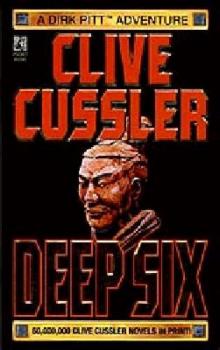 Deep Six
Deep Six Odessa Sea
Odessa Sea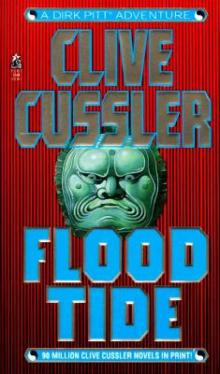 Flood Tide
Flood Tide Valhalla Rising
Valhalla Rising Thriller 2
Thriller 2 The Tombs
The Tombs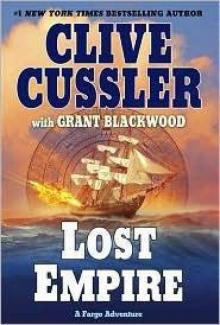 Lost Empire
Lost Empire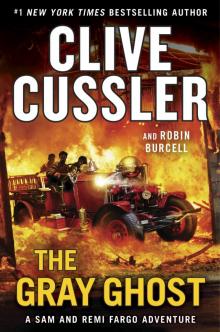 The Gray Ghost
The Gray Ghost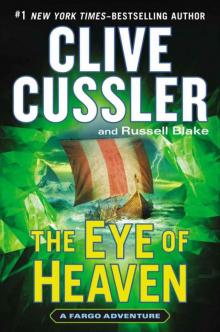 The Eye of Heaven
The Eye of Heaven Polar Shift
Polar Shift The Kingdom
The Kingdom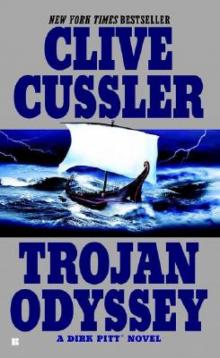 Trojan Odyssey
Trojan Odyssey Shadow Tyrants
Shadow Tyrants Nighthawk
Nighthawk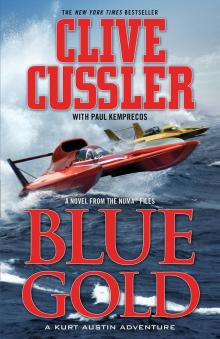 Blue Gold
Blue Gold Serpent
Serpent Lost City
Lost City The Gangster
The Gangster White Death
White Death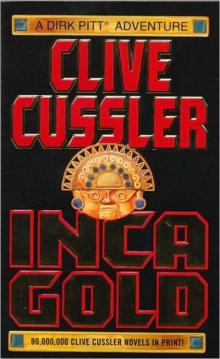 Inca Gold
Inca Gold The Mayan Secrets
The Mayan Secrets The Pharaoh's Secret
The Pharaoh's Secret The Emperor's Revenge
The Emperor's Revenge Corsair
Corsair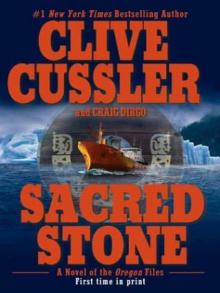 Sacred Stone
Sacred Stone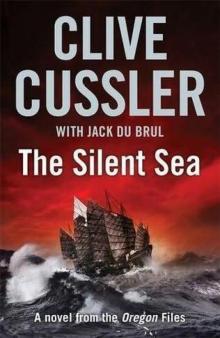 The Silent Sea
The Silent Sea The Rising Sea
The Rising Sea Black Wind
Black Wind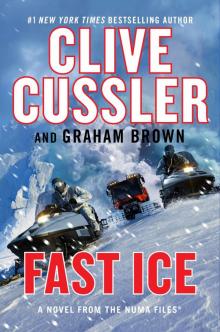 Fast Ice
Fast Ice Ghost Ship
Ghost Ship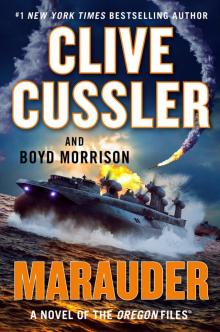 Marauder
Marauder The Thief
The Thief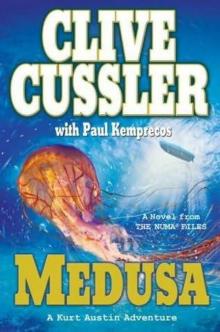 Medusa
Medusa Typhoon Fury
Typhoon Fury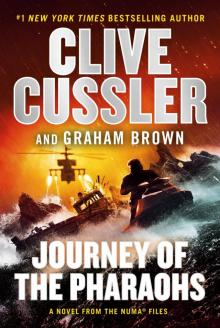 Journey of the Pharaohs
Journey of the Pharaohs The Navigator
The Navigator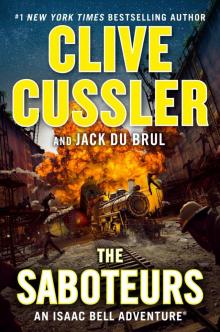 The Saboteurs
The Saboteurs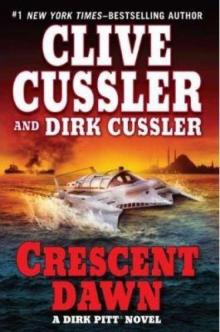 Crescent Dawn
Crescent Dawn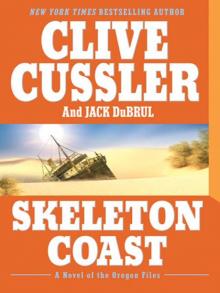 Skeleton Coast
Skeleton Coast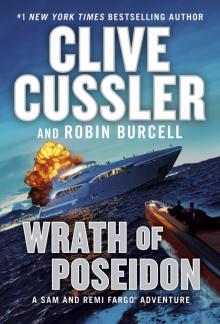 Wrath of Poseidon
Wrath of Poseidon The Mediterranean Caper
The Mediterranean Caper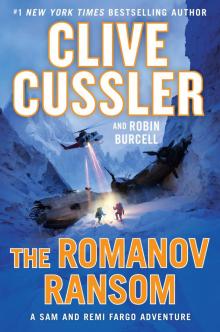 The Romanov Ransom
The Romanov Ransom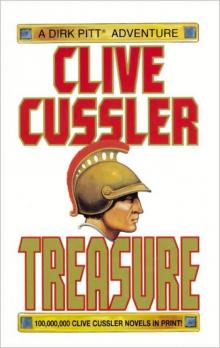 Treasure
Treasure The Race
The Race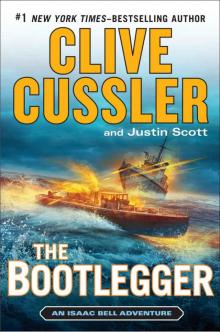 The Bootlegger
The Bootlegger Spartan Gold
Spartan Gold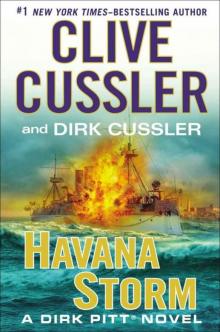 Havana Storm
Havana Storm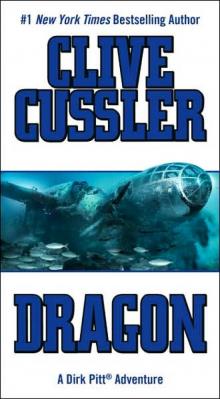 Dragon
Dragon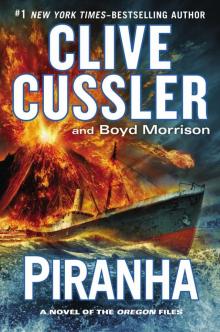 Piranha
Piranha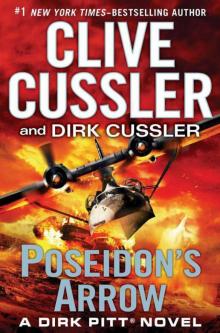 Poseidon's Arrow
Poseidon's Arrow The Cutthroat
The Cutthroat Atlantis Found
Atlantis Found The Jungle
The Jungle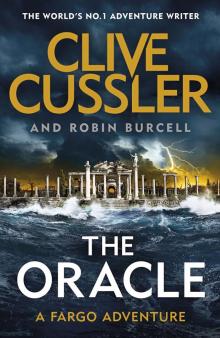 The Oracle
The Oracle Treasure / Dragon / Sahara: Clive Cussler Gift Set
Treasure / Dragon / Sahara: Clive Cussler Gift Set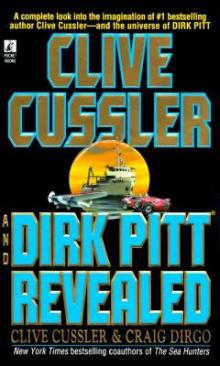 Clive Cussler and Dirk Pitt Revealed
Clive Cussler and Dirk Pitt Revealed The Sea Hunters
The Sea Hunters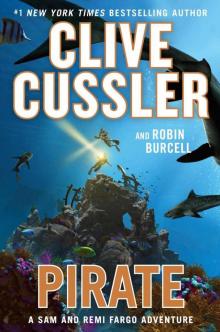 Pirate
Pirate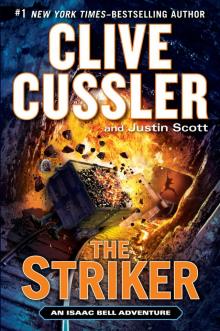 The Striker
The Striker Plague Ship
Plague Ship The Wrecker
The Wrecker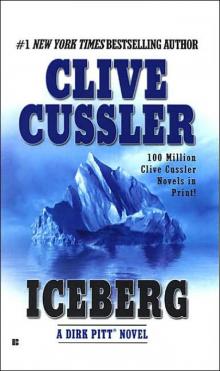 Iceberg
Iceberg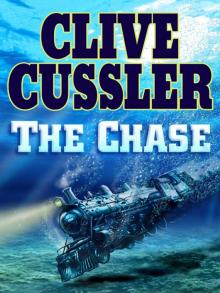 The Chase
The Chase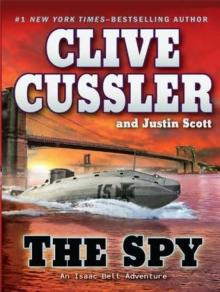 The Spy
The Spy Golden Buddha
Golden Buddha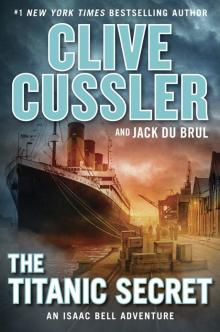 The Titanic Secret
The Titanic Secret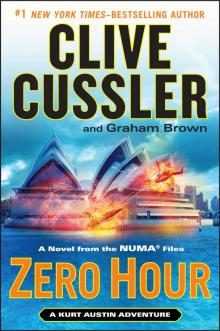 Zero Hour
Zero Hour Fire Ice
Fire Ice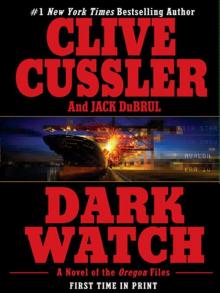 Dark Watch
Dark Watch The Storm
The Storm The Assassin
The Assassin Vixen 03
Vixen 03 Arctic Drift
Arctic Drift Night Probe!
Night Probe! Cyclops
Cyclops Medusa nf-8
Medusa nf-8 Shock Wave dp-13
Shock Wave dp-13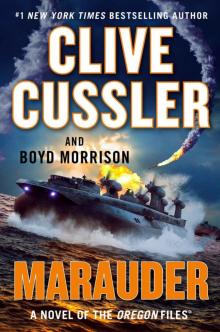 Marauder (The Oregon Files)
Marauder (The Oregon Files) Lost Empire fa-2
Lost Empire fa-2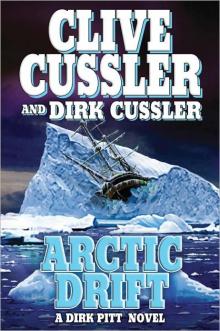 Arctic Drift dp-20
Arctic Drift dp-20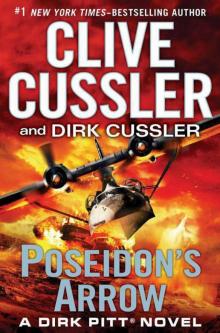 Dirk Pitt 22 - Poseidon's Arrow
Dirk Pitt 22 - Poseidon's Arrow Treasure of Khan dp-19
Treasure of Khan dp-19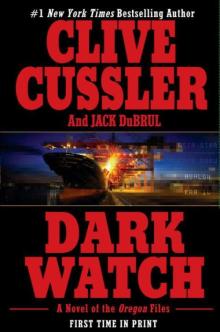 Dark Watch of-3
Dark Watch of-3 Devil's Gate
Devil's Gate The Sea Hunters II: More True Adventures with Famous Shipwrecks
The Sea Hunters II: More True Adventures with Famous Shipwrecks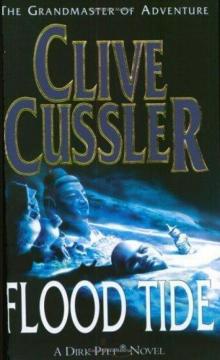 Flood Tide dp-14
Flood Tide dp-14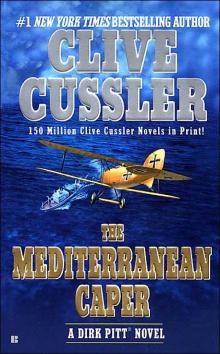 The Mediterranean Caper dp-2
The Mediterranean Caper dp-2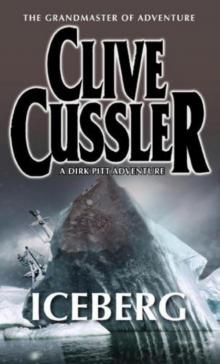 Iceberg dp-3
Iceberg dp-3 Sahara dpa-11
Sahara dpa-11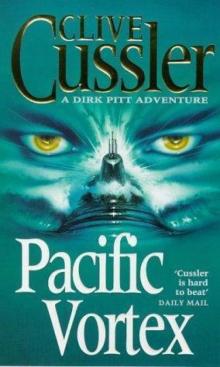 Pacific Vortex! dp-1
Pacific Vortex! dp-1 Deep Six dp-7
Deep Six dp-7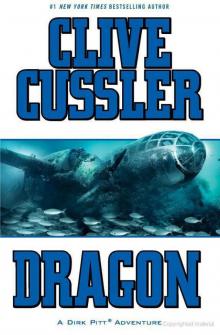 Dragon dp-10
Dragon dp-10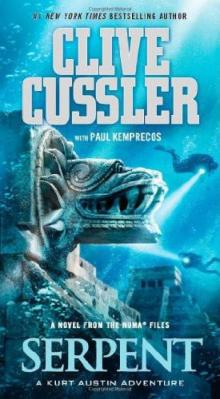 Serpent nf-1
Serpent nf-1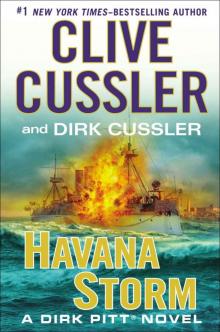 Havana Storm (Dirk Pitt Adventure)
Havana Storm (Dirk Pitt Adventure)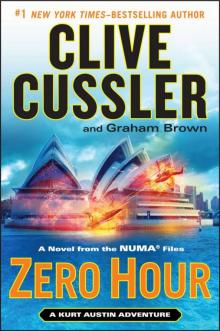 Zero Hour nf-11
Zero Hour nf-11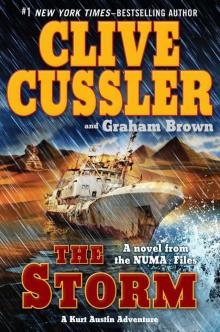 The Storm nf-10
The Storm nf-10 The Thief ib-5
The Thief ib-5 Lost City nf-5
Lost City nf-5 The Mayan Secrets fa-5
The Mayan Secrets fa-5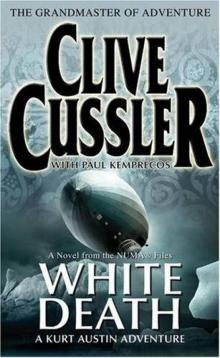 White Death nf-4
White Death nf-4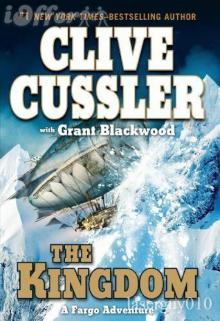 The Kingdom fa-3
The Kingdom fa-3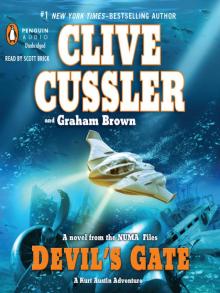 Devil's Gate nf-9
Devil's Gate nf-9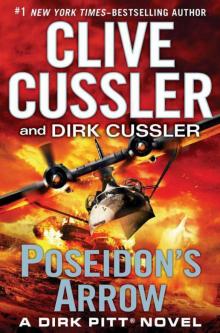 Poseidon's Arrow dp-22
Poseidon's Arrow dp-22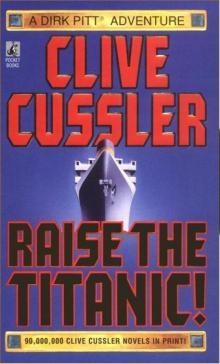 Raise the Titanic dp-4
Raise the Titanic dp-4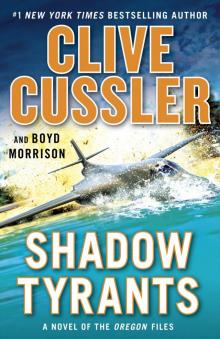 Shadow Tyrants--Clive Cussler
Shadow Tyrants--Clive Cussler Sacred Stone of-2
Sacred Stone of-2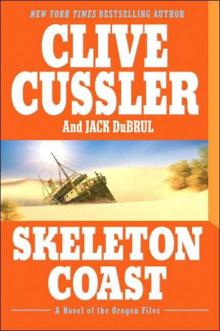 Skeleton Coast tof-4
Skeleton Coast tof-4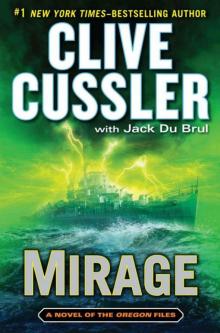 Mirage tof-9
Mirage tof-9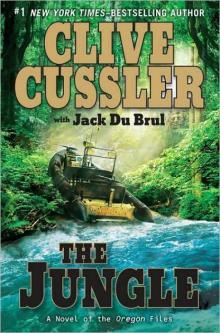 The Jungle of-8
The Jungle of-8 The Emperor's Revenge (The Oregon Files)
The Emperor's Revenge (The Oregon Files) Golden Buddha of-1
Golden Buddha of-1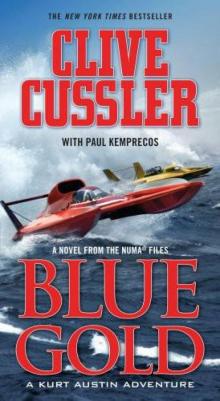 Blue & Gold
Blue & Gold The Tombs fa-4
The Tombs fa-4 Inca Gold dp-12
Inca Gold dp-12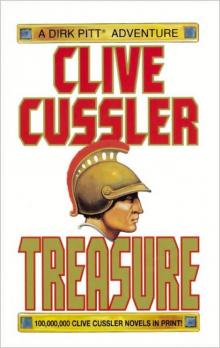 Treasure dp-9
Treasure dp-9 Atlantis Found dp-15
Atlantis Found dp-15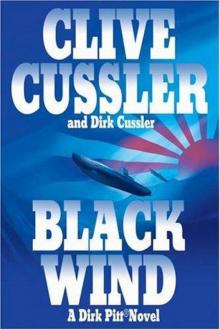 Black Wind dp-18
Black Wind dp-18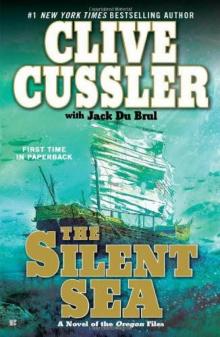 the Silent Sea (2010) tof-7
the Silent Sea (2010) tof-7 The Wrecker ib-2
The Wrecker ib-2 Fire Ice nf-3
Fire Ice nf-3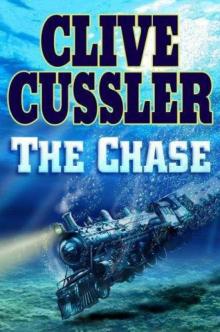 The Chase ib-1
The Chase ib-1 Sahara
Sahara The Striker ib-6
The Striker ib-6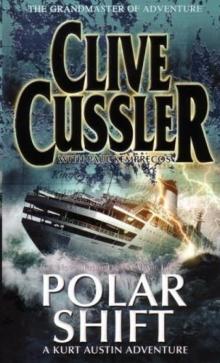 Polar Shift nf-6
Polar Shift nf-6 The Race ib-4
The Race ib-4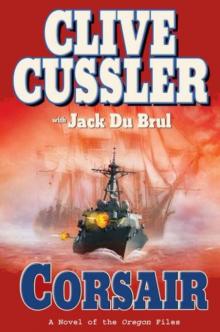 Corsair of-6
Corsair of-6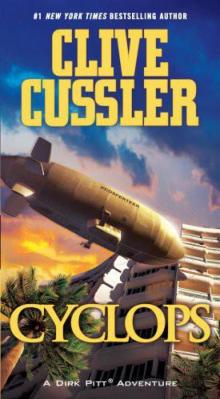 Cyclops dp-8
Cyclops dp-8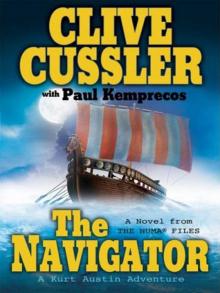 The Navigator nf-7
The Navigator nf-7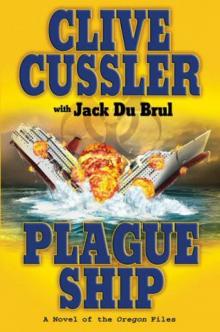 Plague Ship tof-5
Plague Ship tof-5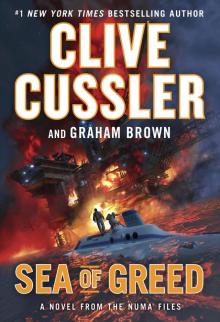 Sea of Greed
Sea of Greed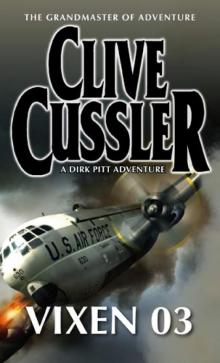 Vixen 03 dp-5
Vixen 03 dp-5 Thriller 2: Stories You Just Can't Put Down
Thriller 2: Stories You Just Can't Put Down